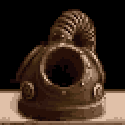|
GregNorc posted:What's the best way to get a Fedora install onto an 8GB SDHC card?
|
|
|
|

|
| # ? Jun 6, 2024 03:36 |
|
GregNorc posted:What's the best way to get a Fedora install onto an 8GB SDHC card? Another option is to do an install of Fedora in a VM and then dd the hard drive image to the SD card. Edit: From the looks of it, persistent storage does do the unionfs thing. Although be careful because if you remove a package that comes with the ISO image and then reinstall it, it will take up the space on the persistent storage, not the read only squashfs image. waffle iron fucked around with this message at 19:17 on Jul 3, 2009 |
|
|
|
Twlight posted:I know in KDE (this is centos btw) you can just right click on the clock and select date&time format. Yeah, I can right-click on the clock and change the Preferences to a 24-hour format, so the Clock on the Task Bar is 24-hour format. But the rest of my OS still uses the 12-hour clock. Is there any way to change the system-wide clock format, short of changing the regional settings?
|
|
|
|
If you export LC_TIME=en_DK.UTF-8 you will get a time locale that uses 24-hour clocks, although most systems won't have that locale generated by default.
|
|
|
|
Quick couple newbie questions here. After having to reformat my hard drive for the millionth time I was recommended to try out Ubuntu. Installation went quick and smoothly and I like the way it runs but I'm having two problems that I cant seem to figure out. I have Ubuntu installed on my 30GB hard drive that was formatted during the Ubuntu installation. I have another 80GB hard drive that I use to store music, movies and games on but it isn't showing up when I check Places > Computer. Is there something I need to do to get the second hard drive recognized? Secondly I have no audio playback what so ever. I can go onto Youtube and have videos play no problem however there is no audio on anything I do. I am currently running a JVC sterio system connected to my computer via usb. I was told to run 'sudo apt-get install ubuntu-restricted-extras' in the terminal and did so but it doesn't seem to make any difference, or at least I can't notice a difference.
|
|
|
|
I want to move my desktop completely over to Linux. Not sure what distro I'm going to use yet, but I think these questions should be general enough so that it doesn't matter. 1. I want to use Amarok or something other than iTunes for listening to music. I have an iPhone though. Is there a "Remote" type application for the iPhone that can control Amarok like you can with iTunes? 2. I understand I can boot up WinXP in a VM and sync my phone through iTunes there. Is this the best way of managing an iPhone when you have desktop Linux? 3. Can I have iTunes in that VM access my music library on the linux partition so I don't have to have duplicate copies of my music? If a song is added to my Amarok, would it automatically update in iTunes when I booted up the VM next time? 4. Can I upgrade my iPhone's firmware through iTunes in that VM or is that not recommended? How else would I get the firmware upgrades? I'm going to get off the iPhone when my contract is up in about a year, but until then it's what I've got. Apple not supporting Linux is a pain and is why I'm leaving.
|
|
|
|
Drop The Bomb posted:I am currently running a JVC sterio system connected to my computer via usb.  Colorblind Pilot posted:I want to move my desktop completely over to Linux. Not sure what distro I'm going to use yet, but I think these questions should be general enough so that it doesn't matter. I don't have any iPhone, but I'll try answering anyway. 1. No idea, but doubt it. 2. Sounds like it, yeah. iTunes didn't run at all in wine last time I tried (for buying poo poo off the store with a gift card). 3. Yeah sure, you can use samba/smb to network mount your stuff, or eventually use something like VirtualBox's vboxsf (might be faster I dunno). 4. If you first manage to get USB forwarding to the VM working, I imagine firmware upgrading wouldn't be any more troublesome than music importing.
|
|
|
|
I use headphones, and the Volume bar has to be almost down to nothing for it to be a comfortable level. This also means that my keyboard's volume wheel is more sensitive than I'd like it to be--it increments/decrements the volume by too much, so I have to adjust the volume by moving the slider. Is there any way to decrease the max volume, so I can use the whole slider, and so it's not as sensitive? I have an X-Fi XtremeGamer sound card, and the official drivers are working just fine, but I don't know if there's any option to configure settings for headphones, versus speakers (which is what I suspect the problem is).
|
|
|
|
Alright this is a somewhat silly question to ask as I'm assuming it isn't very difficult to setup but I'll ask anyway. My current setup right now allows me to SSH into home from public wifi giving me a ssh proxy tunnel that I use. That setup is fine and all but I want to setup a squid proxy server on the same box running as my ssh server so that all of my traffic passing through the tunnel is also using the squid cache. The setup would look like so: Public WiFi > SSH Tunnel > bounce over port 3128 for squid use > internet (or cache) > back to SSH Tunnel. I'm curious how to best do this? Since SSHD is listening on the port that the tunnel is on can I forward 3128 to the sshd port and have it work that way or is there something else involved here?
|
|
|
|
All right. I want to give Linux another try, but I am drowning in a sea of information and options. I know I can dual boot Linux and Windows. I have two 250 GB hard drives, which are already partitioned into two 116 GB chunks each. My D: is full of junk I'm going to delete anyways. Can I just install Ubuntu 9.04 to that partition, and then set up dual boot normally? Or are there special considerations I need to keep in mind? I ask because this is the most stable version of Windows I've ever used, and I REALLY don't want to gently caress it up. EDIT: Yes, I have googled, and I think it'll be fine, but I'd rather ask and look foolish than not ask and prove it. Luminous Cow fucked around with this message at 23:11 on Jul 6, 2009 |
|
|
|
Luminous Cow posted:Dual booting question You will be fine. Even if you manage to destroy the boot partition AND the windows boot manager you can still recover this. Just make sure you have ID'ed your hard drives in terms of how the BIOS sees them to verify you're installing on the correct partition.
|
|
|
|
This little project on my journey to Linux knowledge has become a severe pain in my rear end. Everything works fine up until I actually go to start the actual installing and such. It makes it to 5%, freezes, then command lines come up stating ERROR: something about I/O and then followed by SQUASHFS ERROR. What is going on? I have tried everything to get this poo poo running (short of formatting windows). I tried installing side by side, I tried creating specific partitions (a 50 GB for the OS and a 2.5 GB for the swap), I tried doing things manually. It all results in the same error. I'm off to give it another shot, but drat. From what I can tell, when following the instructions here, it doesn't find that free space. That's why I tried the partition thing, but good god, that was just a mess.
|
|
|
|
Luminous Cow posted:This little project on my journey to Linux knowledge has become a severe pain in my rear end. Everything works fine up until I actually go to start the actual installing and such. It makes it to 5%, freezes, then command lines come up stating ERROR: something about I/O and then followed by SQUASHFS ERROR. What is going on?
|
|
|
|
spoon0042 posted:Sounds like it could just be a bad cd. Like, bad ISO? Cause I'm on my third burn now. Using Deepburner to burn it, which I have never had problems with.
|
|
|
|
Try another burner? Try burning at a slower speed? Try redownloading the ISO? If none of those work then it's a hardware issue and you should run memtest and prim95 to verify that your memory and processor check out okay.
|
|
|
|
reborn posted:Try another burner? It's not the disc. It's installing beautifully on my desktop (which has a single hard drive). While Linux on my desktop is all well and good, it bothers me that I can't install it on my laptop, where I do most of my computing. I have never had a problem with my laptop until now. I believe the problem may lie in how the computer came with two partitions set up from the factory. My laptop is an ASUS G50V. It came with each 250 GB hard drive partitioned into two separate drives. When I try to delete the secondary partition (which has nothing on it whatsoever) it says: "This is an extended partition. The partition will become inaccessible if you delete it. Do you wish to continue?" Does this have anything to do with it? I honestly have no idea what it means. I'll run memtest tonight, but I highly doubt that has anything to do with it, as this computer has never crashed. Considering I run Vista 64 Bit Home Premium, and play many resource hogging games, I think I would have run into this issue before now. Oh, and I also used the check disc feature on the Ubuntu boot disc. No problems whatsoever. Luminous Cow fucked around with this message at 03:28 on Jul 7, 2009 |
|
|
|
Luminous Cow posted:It's not the disc. It's installing beautifully on my desktop (which has a single hard drive). While Linux on my desktop is all well and good, it bothers me that I can't install it on my laptop, where I do most of my computing. I have never had a problem with my laptop until now. I believe the problem may lie in how the computer came with two partitions set up from the factory. Laptops can have funky things with hard drives and CD drives. It's a good idea to look up guides on specific models when you run into trouble. Also, keep in mind that most my linux is comprised of google-fu, so with out messing with the laptop these are only points to help. I did just a quick search, but this blog post is fairly recent (using Ububntu 9.04). Looks like you'll need to change a bios setting. It also looks like that bios change might make Vista not want to boot (using this UbuntuForum post as reference), so once you've gotten the install i think you can add the dmraid=true (from the monalisa blog) option to the menu list so that linux can see the bios thing when you change it back. Hope those point you in the right direction. And remember, if all else fails, there is always the Wubi installer (installing Ubuntu as an application within Windows) to try it out. http://wubi-installer.org/. I forget, but I think its part of the LiveCD still?
|
|
|
|
Monitoring an mdadm array, seems like there are two viable options, both of which are listed in the mdadm manual. 1) Spawn another mdadm as a daemon in monitor mode: code:2) Create a cron job to run one-off scans periodically: code:
|
|
|
|
Luminous Cow posted:It's not the disc. It's installing beautifully on my desktop (which has a single hard drive). While Linux on my desktop is all well and good, it bothers me that I can't install it on my laptop, where I do most of my computing. I have never had a problem with my laptop until now. I believe the problem may lie in how the computer came with two partitions set up from the factory. It's most likely not a hardware failure, like bad RAM. Since it's a laptop, it might have something to do with it not detecting the hardware properly, but I can't be sure. At exactly what stage does it freeze (verifying data, copying new data, etc.)? Try writing down the error word for word and post it here, and google it. As for the hard drive partition, that message about the extended partition is just warning you that anything on it (which is nothing) will be gone for good when you delete the partition. This is what you want anyway, so click yes. After that, it should show up as "Unallocated," at which point, you can either: a. Right-click your primary partition (the one you actually use) and click "Extend Partition" to have it take over that empty space, or b. Use that empty space to install Linux on. When you start installing it, the empty space will show up in the Partition Editor. Select it, and format it to your file system of choice (ext3 or ext4 is probably your best choice). But you'll also want to leave some room for the swap area, which is usually the same amount of RAM you have, or 1.5x. Whichever you prefer.
|
|
|
|
Yep sorry about that, I hadn't realized it was a laptop install. As has already been said it's likely just not obtaining or scanning your hardware properly and a quick search should point you in the right direction for that particular model and the configuration changes you may have to make.
|
|
|
|
I'm trying to clean up a downloads folder. Is it possible to have rTorrent output a list of torrents it's currently seeding so I can compare that to the files currently in the downloads folder and delete anything that rTorrent isn't currently using?
|
|
|
|
I'd asked a question about the 'rename' command a few weeks ago; worked great and I've got another one. I want to rename all files in a directory that contain underscores to replace the underscores with dashes. There are two underscores in each filename that contains them, though not all files do. ("abc_xyz_001.txt" -> "abc-xyz-001.txt") What's the regex I would use in the rename command to do this (e.g. "rename regex *")?
|
|
|
|
A Violence Gang posted:I'd asked a question about the 'rename' command a few weeks ago; worked great and I've got another one. I want to rename all files in a directory that contain underscores to replace the underscores with dashes. There are two underscores in each filename that contains them, though not all files do. ("abc_xyz_001.txt" -> "abc-xyz-001.txt") What's the regex I would use in the rename command to do this (e.g. "rename regex *")? Seems like the simple rename 's/_/-/g' * (more specific glob seems unnecessary, but something to think about in general)
|
|
|
|
covener posted:Seems like the simple rename 's/_/-/g' * (more specific glob seems unnecessary, but something to think about in general) That was perfect. Thanks!
|
|
|
|
do it posted:I'm trying to clean up a downloads folder. Is it possible to have rTorrent output a list of torrents it's currently seeding so I can compare that to the files currently in the downloads folder and delete anything that rTorrent isn't currently using? From the main view, you can hit 8 to view [seeding] and 9 for [active]. 5 for [complete]. I'll normally just end the files that aren't seeding anything. Not sure if this really helps out.. Another option is try lsof | grep rtorrent to list the open files used by rtorrent, but I think this will list anything in your queue, not just files being seeded/downloaded.
|
|
|
|
Interlude posted:
I think most distros provide an init script for spawning mdadm to watch for failures when you install mdadm, so it would probably be easiest to use that. That's what I use, anyway, and it's worked so far (I've gotten emails for RAID issues in the past from it).
|
|
|
|
I'm having a weird issue with Apache+PHP under Ubuntu 9.04. I install Apache, I install PHP. Everything seemed to work. I noticed a random directory not wanting to load the index correctly. http://mysite/test/ -> application/x-httpd-php file prompt. (and when saved, does show the PHP source) http://mysite/test/index.php -> loads correctly. PHP is installed and working, or the other PHP apps wouldn't work. Things like phpMyAdmin and eGroupWare load up, as well as the trouble application when I specify the filename. Apache isn't parsing the PHP as the index in one location. Everything is at default PHP and Apache settings. (index.php is specified in dirs.conf, and PHP parsing works everywhere else) Anyone have any idea? Googling for the x-httpd-php error gives me a hundred pages on making sure PHP is installed. :/ Edit I don't know if it was some issue with libapache2-mod-php5 not being installed before and Firefox caching the bad stuff, but clearing the Firefox cache seemed to allow the page to load. Xenomorph fucked around with this message at 16:55 on Jul 8, 2009 |
|
|
|
Can someone explain the concept and how-to of rolling back to an older kernel(?)? I am dual booting Win 7 and Ubuntu. At my GRUB boot menu, I have the option between Win 7 and two Ubuntu kernels labeled something along the lines of Ubuntu 2.1.11 and Ubuntu 2.1.13. My concern is that after installing Ubuntu, I follow random guides online to install codecs and other stuff I thought was needed. I did a lot of copy/paste from the CLI, and now looking back at it I don't have the faintest drat clue what I installed on my system. I'm a bit paranoid that I might of compromised the integrity of my computer. I'd like to roll back / restore to the original fresh install version of Ubuntu. Any ideas on how to handle this? My apologies if I completely hosed the use of appropriate terminology.
|
|
|
|
Hughmoris posted:Can someone explain the concept and how-to of rolling back to an older kernel(?)? I am dual booting Win 7 and Ubuntu. At my GRUB boot menu, I have the option between Win 7 and two Ubuntu kernels labeled something along the lines of Ubuntu 2.1.11 and Ubuntu 2.1.13. You can't roll back your system by using an older kernel. The kernel is like a middleman helping the applications talk to your hardware. Even if you go back to your old sugar daddy, the memories together with your current one won't disappear. Try checking your "CLI history log", that might make retracing your steps easier. Paste this in a terminal without the quotes: "gedit ~/.bash_history". By default the last 1000 commands will be saved there. If that doesn't help, and you didn't backup or anything, I guess you'd have to reboot to go fresh. Just keep your /home around and it shouldn't be too much of a pain (everyone should slice their /home off to a separate partition to make life easy for themselves, even switching to another GNU/Linux flavor becomes a piece of cake).
|
|
|
|
Hughmoris posted:Can someone explain the concept and how-to of rolling back to an older kernel(?)? I am dual booting Win 7 and Ubuntu. At my GRUB boot menu, I have the option between Win 7 and two Ubuntu kernels labeled something along the lines of Ubuntu 2.1.11 and Ubuntu 2.1.13. If you're new to linux, it's best to take notes whenever you make changes to system files or install apps that aren't handled by the package manager. Apps that you've installed from .debs you found online or through third-party repositories can be listed in Synaptic (filter with the sidebar on the left).
|
|
|
|
and honestly the package manager is the greatest feature found on a Linux desktop. All those codecs were probably in there somewhere and probably even had a metapackage to install them all in one go. You'll even get updates installed automatically when they're available.
|
|
|
|
Xenomorph posted:I'm having a weird issue with Apache+PHP under Ubuntu 9.04. Hi, Check in main section of your httpd.conf if you have the following lines: LoadModule php5_module modules/libphp5.so and in the dir_module section check ;., <IfModule dir_module> DirectoryIndex index.html index.php </IfModule> bye,
|
|
|
|
Just wanted to suggest that everyone who uses GNU screen should give tmux a try. It is basically a rewrite with some nice features, like vertical split windows.
|
|
|
|
Just wanted to say thanks for the information on how to rollback Ubuntu. I'll probably end up doing a fresh install, and will just start paying more attention to the stuff I install on my system.
|
|
|
|
Hughmoris posted:Just wanted to say thanks for the information on how to rollback Ubuntu. I'll probably end up doing a fresh install, and will just start paying more attention to the stuff I install on my system.  I don't know where ubuntu has this, but most distros have a separate log for the package manager. That, combined with the bash log, will make it quite easy to reverse any steps taken, provided you have good knowledge of linux. Or you could just keep /home and do a reinstall, whatever is less painful for yourself.
|
|
|
|
Zom Aur posted:This is a good idea. 
crab avatar fucked around with this message at 22:20 on Jul 10, 2009 |
|
|
|
jegHegy posted:Hey, look what I just found in Synaptic! I'm sure there's a way to get a list with dpkg or some log file too though. IIRC, not tracked directly by dpkg or apt-get, only higher level tools. edit: corrected later below, confused about scope of an old FAQ covener fucked around with this message at 22:23 on Jul 10, 2009 |
|
|
|
jegHegy posted:Hey, look what I just found in Synaptic! I'm sure there's a way to get a list with dpkg or some log file too though. That said though, I didn't know about that. Mostly because I don't use a system with debs right now. Still, nice to know that it does in fact have some kind of logging going on.
|
|
|
|
jegHegy posted:I'm sure there's a way to get a list with dpkg or some log file too though. /var/log/dpkg.log on Debian systems. It's rather verbose.
|
|
|
|

|
| # ? Jun 6, 2024 03:36 |
|
ShoulderDaemon posted:/var/log/dpkg.log on Debian systems. It's rather verbose.
|
|
|






















